It was a remarkable spring.
San Diego High won its first outright, state championship since 1929 and the Hilltoppers and Hoover Cardinals finished 1-2 in the team race in the CIF Southern Section finals.
It stood to reason that since San Diego also was team champion in the five-star Southern Counties’ meet at Huntington Beach in March and had come up strong in the Coast League Relays that coach Glenn Broderick’s squad would win the dual meet championship.
But San Diego, Hoover, and Long Beach Wilson tied, each with a 5-1 record. San Diego topped Wilson, 66-56, after Wilson had edged the Cardinals, 62 ½-59 ½, in the first night meet in city history. Wilson and Hoover baseballers had occupied the Cardinals’ stadium in the afternoon.
UPSET FOLLOWED BY SURPRISE
Hoover stunned the Hillers by winning their dual-meet showdown, 63 ½-58 ½, in a sensational battle replete with outstanding performances, including the Cardinals‘ meet-clinching, school-record 1:30.7 victory in the 880-yard relay, final event of the day.
Two days after Bob Beckus, Clyde Yakel, and Alvin Cordray had led Hoover to its first win over the Hillers, San Diego principal John Aseltine announced that track coach-head football coach Glenn Broderick had resigned.
Broderick would remain with his squad through the upcoming Coast League championships, CIF divisional and finals competition, and the state meet in Hollister.
No reason was given for Broderick’s departure, much less the timing. There were rumors of health issues.
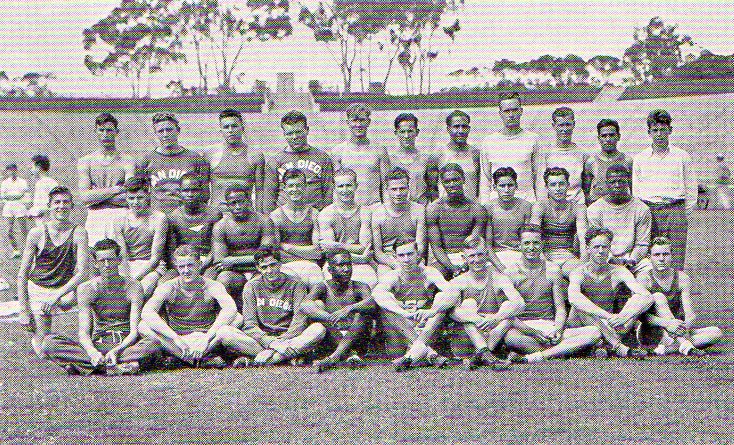
I first met Broderick in the early ‘sixties when the retired coach, who had worked in the defense industry at Consolidated Vultee Aircraft during and after World War II, was a regular at any meet of importance in San Diego, serving as a finish judge or timer for years.
Broderick left a strong coaching legacy on the hilltop. The Hillers were 56-18-1 in dual meets from 1927-38, including a run of 40-6 from 1929-35. Broderick was 15-8-2 in three seasons, 1935-37, in football and his Class B gridders won the 1929 Southern California championship.
IT’S HOOVER’S TIME
Hoover had not beaten the Hilltoppers in five dual meets since 1933, losing by scores of 76-37, 73-29, 88-15, 82-31, and 70-43.
With Beckus, an outstanding half-miler and hop-step-and-jumper; Yakel, the Southern Section record holder in the Class B 220 in 1937, and the versatile Cordray, one of the state’s best in the broad jump and high jump, coaches Ralph Young and Lawrence Carr liked their chances.
Anticipation was such that Mitch Angus of The San Diego Union began writing about the meet an unusual five days before the first sound of the starter’s pistol.
It was a home meet for the Hilltoppers, but officials from both schools toyed with the idea of moving the competition to Friday night, under the lights at Hoover. A decision was made to hold the meet in City Stadium on Saturday afternoon.
A midweek story was headlined “Hoover Track Hopes Pinned on Strategy of Coaches”. Rumors floated that Cardinals coaches were considering a move of Beckus into the 220-yard low hurdles in hopes of picking up additional points.
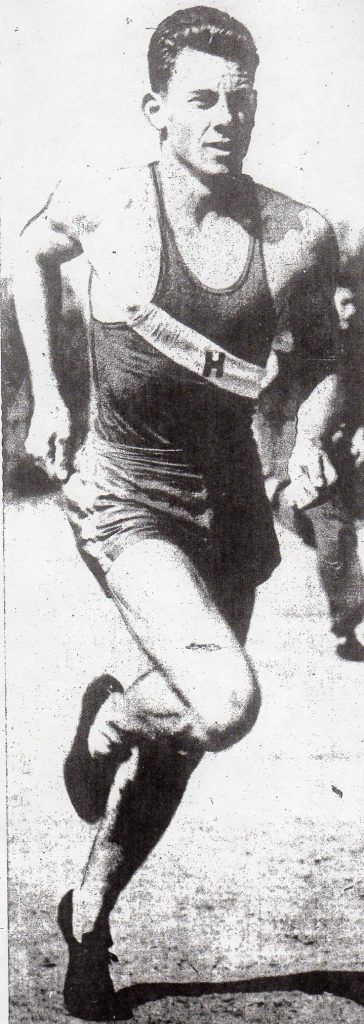
Beckus normally competed in the 880, in which he several times bettered the school record, was the outstanding hop-step-and-jump athlete in the state, a reliable broad jumper, and one four members of the relay team.
Beckus would have a better chance of scoring vital points or upsetting the Hillers’ Johnny Biewener in the long hurdle race than he would in the broad jump, which featured two of the state’s best, Hoover’s Alvin Cordray and San Diego’s Bob Logan.
Broderick worried because his best HSJ competitor, Zeno Berger, was nursing a charley horse.
HOW HE SEES IT
Kearney Johnson, a composing room employee for The San Diego Union, was known as “Dopey,” because Johnson loved to dope track meets, especially those involving his beloved alma-mater, San Diego High.
(Twenty-thee years later when I began doping/handicapping the San Diego Section championships for the Evening Tribune, Johnson and I would compare notes).
“Dopey’s” dope sheet favored San Diego by a score of 66-56 and also noted that seven meet records were in jeopardy. Eight meet records actually would be broken and another tied.
Beckus rewarded his coaches’ strategy by getting up for second in the low hurdles; won the hop, step, and jump, set a school record of 1:59.1 in the 880, and ran a leg on the relay.
Beckus and Cordray, who won the broad jump at 22 feet, 1 ½ inches and upset Bob Logan in the high jump at 6-2 1/2, were outstanding, but it was a trio of Hoover pole vaulters, identified only by their last names, Hart, Cole, and Smith, who cleared a minimal 11 feet.
The 9-0 points sweep in the vault midway in the afternoon allowed the Cardinals to stay close to the Hillers and gave them a chance to win the meet as the favored relay squad.
The teams were tied, 58 1/2 points each, when they lined up for the half-mile race, in which San Diego was in the lead at the final baton exchange.
Yakel caught San Diego anchorman Leonard Black and brought the Cardinals home two seconds faster than they had run all season. San Diego, two yards back, ran 1:31.
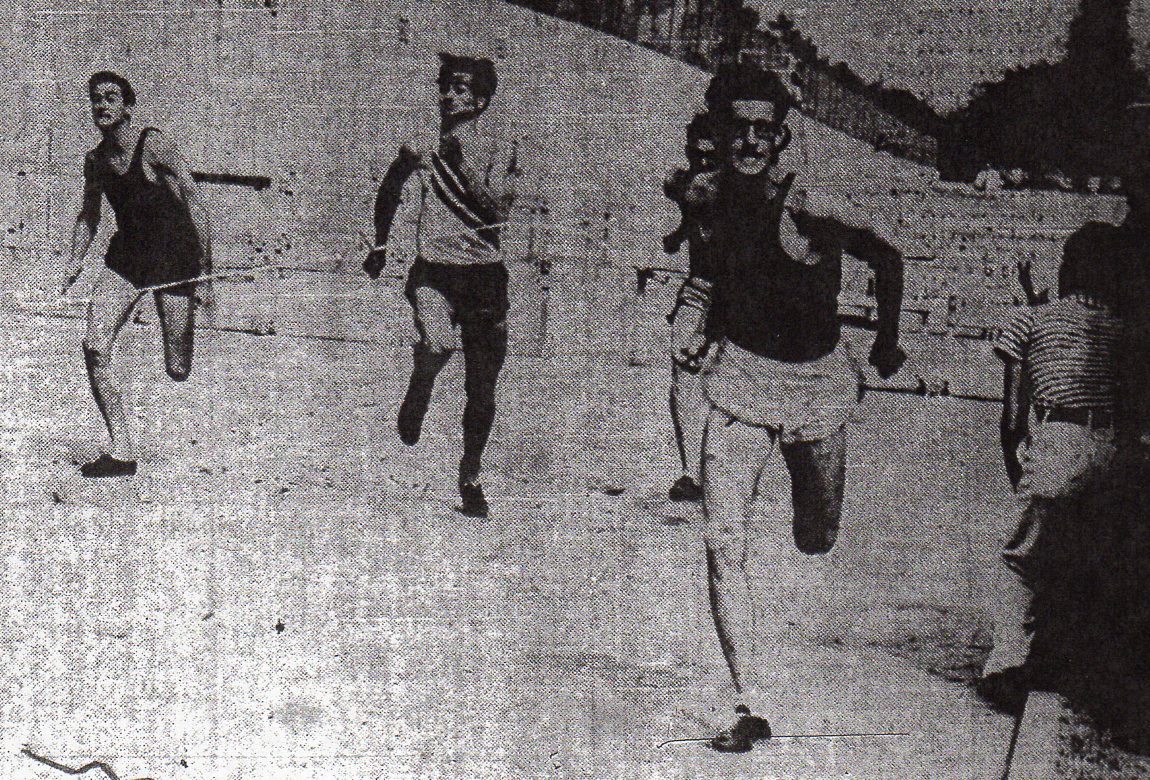
THE BIGGER MEETS
San Diego and Hoover would be favored in the upcoming all-Coast finals, the Divisional meet at Glendale, and in the Southern Section finals at the Los Angeles Coliseum.
Form played out and San Diego got some late-season help from Logan, who had slumped following his school-record, 6-5 1/4 high jump in March against Alhambra.
ALL-COAST
San Diego was first with 67 points, followed by Hoover, 56, Wilson, 53 ½, Long Beach Poly, 17 ½, and Alhambra, 16.
San Diego’s George Franklin won his 440 race in :51 flat and Ed Becker scored a double victory in the weights, reaching 52-3 ¼ in the shot put and 128-11 ½ in the discus.
GLENDALE QUALIFIER
Action moved on to the divisional meet at Glendale, where the Cavers scored 36 ½ points and Hoover 28 ½ to outdistance a field that included athletes from the Bay, Prep, San Gabriel, and Foothill leagues.
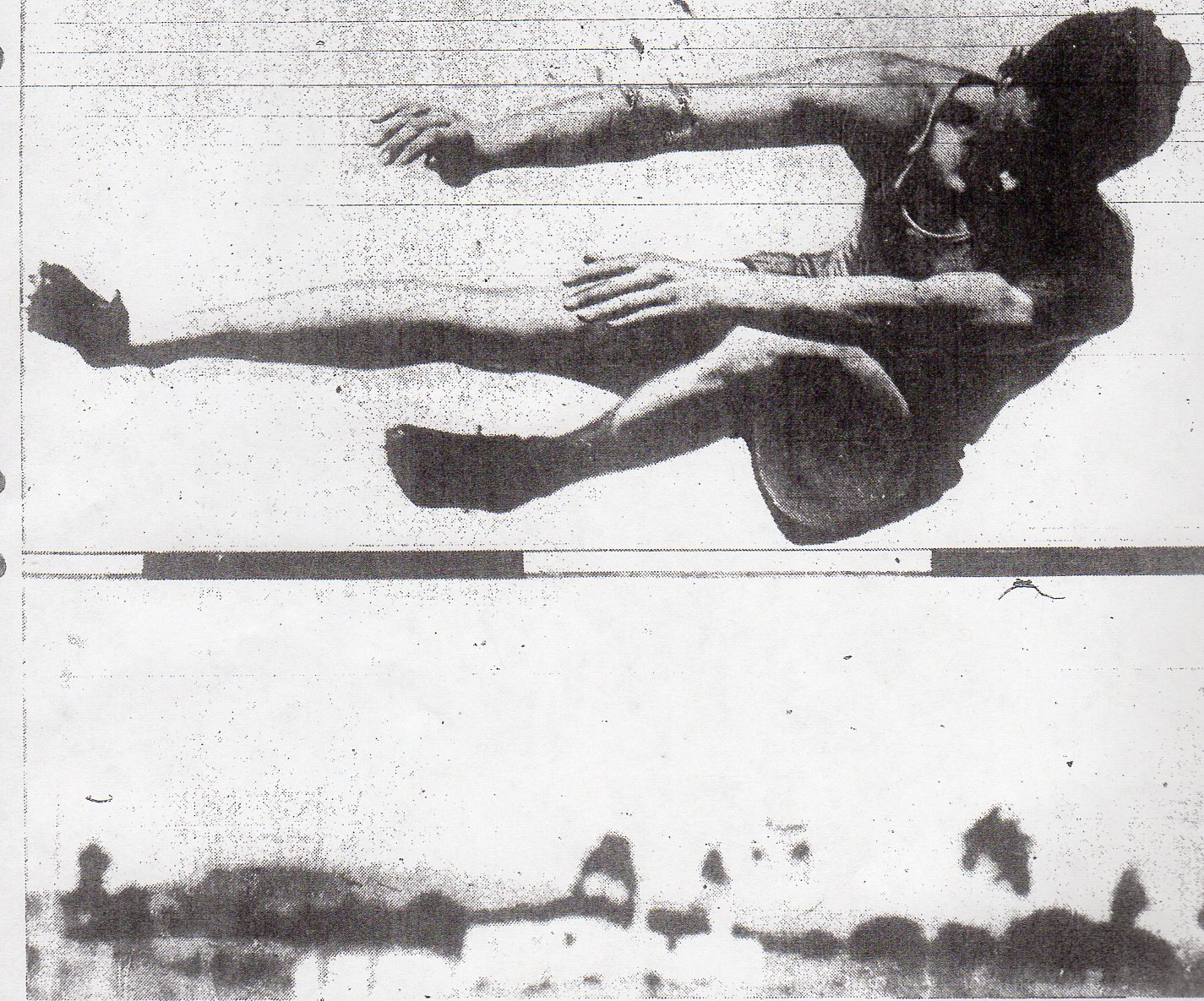
Beverly Hills’ Gil LaCava, son of a Hollywood movie producer, bettered the national high jump record with a leap of 6-6 ½. Logan rallied to clear 6-4 for second and was second in the broad jump.
The first-place finishers in the four Divisional meets plus the next 4 best performers would qualify for the finals.
SOUTHERN SECTION
Coaches awaited the call early in the week from Southern Section commissioner Seth Van Patten, who would announce which competitors moved on to the finals.
San Diego went into the meet with seven individuals entered in 10 of the 13 events. Hoover had six, plus its relay team.
Twenty-five athletes from San Diego plus 11 from the Imperial Valley were among those from the 123 schools represented. San Diego scored 24 points and Hoover 20 1/3. Santa Ana was third with 13.
Johnny Biewener, unbeaten in the high hurdles all year, was second. Biewener also was second in the lows, won by La Jolla’s Jerry Soule in :24.2.
The Hilltoppers’ only winner was Ed Becker, who pushed the shot 54 feet, ½ inch. Logan tied for second in the high jump and was second in the broad jump at 22-8 ½.
Beckus set a Southern Section record by soaring 46-1 ¾ in the hop, step, and jump and helped the Cardinals finish second to Compton’s 1:29.3-winning relay squad.
Yakel was second and Point Loma’s George Abel third in the 220. San Diego‘s Rickey Roth was fifth in the 880.
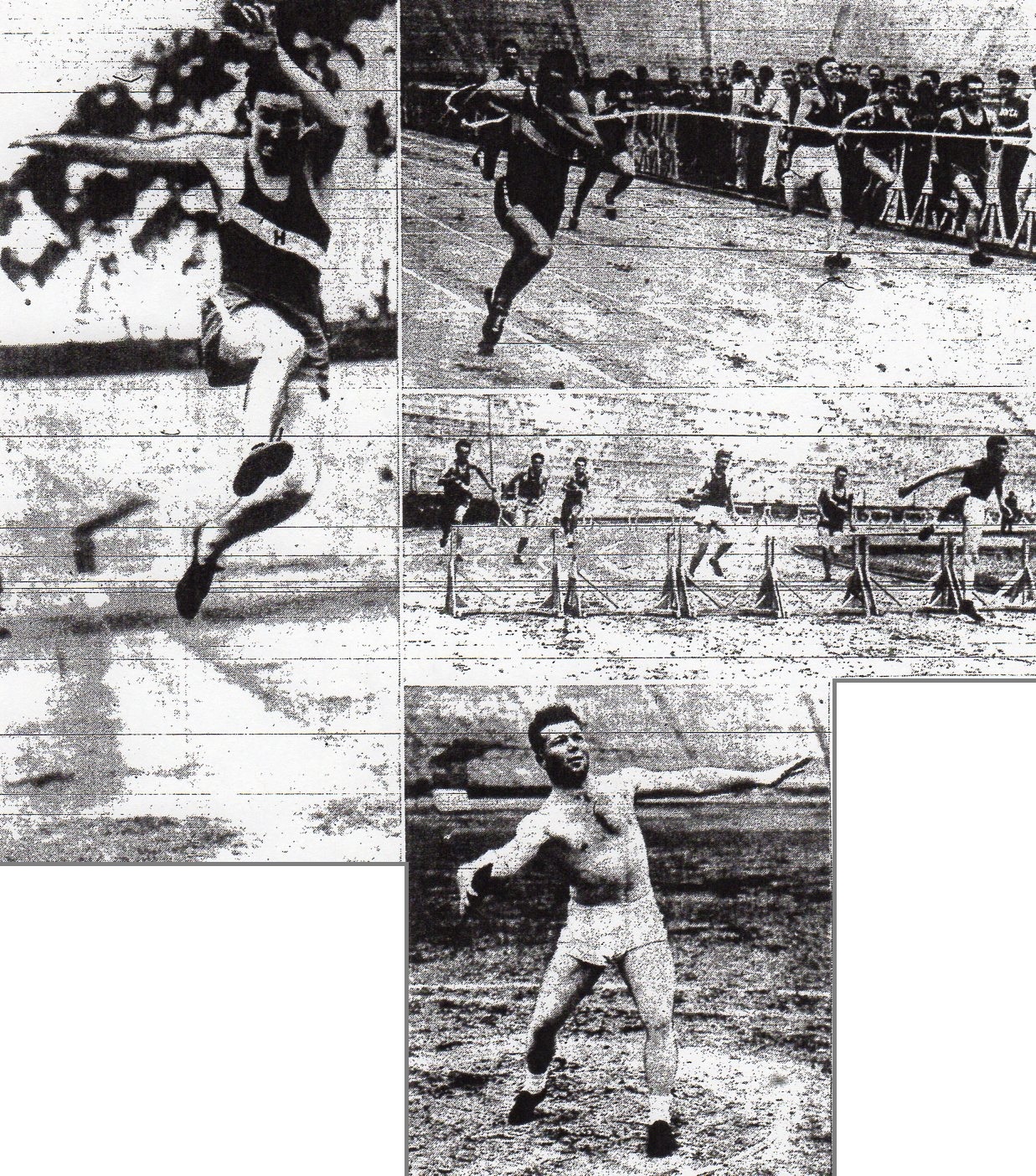
STATE
Broderick and a four-man squad of qualifiers Logan, Becker, Roth, and Biewener headed to Hollister 425 miles North along U.S. 101, and some 90 miles south of San Francisco.
The contingent left on Thursday and overnighted in Santa Barbara, also able to get in a workout before the 250-mile push to the host site the next day.
San Diego’s 18 ½ points outdistanced the 11 ½ each by Sacramento and Santa Ana.
Biewener, beaten the previous week for the first time, rebounded to win the high hurdles in :15.3 and was fourth in the lows. Logan was second in the broad jump with a school-record 23-6 3/4 and tied for second in the high jump.
Roth, slotted into the 880 when a Ontario Chaffey runner withdrew, was fifth and Becker set a school record with a second-place effort of 54-2 ½ in the shot put.
Beckus was shut out, stumbling when hit by another runner and finishing unplaced in the 880 and unable to compete in the hop, step, and jump, because it was not contested in the state meet.
La Jolla’s Jerry Soule was second in the 220 low hurdles and Yakel was fourth in the 220.
Logan and Hoover’s Alvin Cordray tied for second in the high jump at 6-1, behind the national record 6-7 1/8 cleared by Beverly Hills’ Gil La Cava.
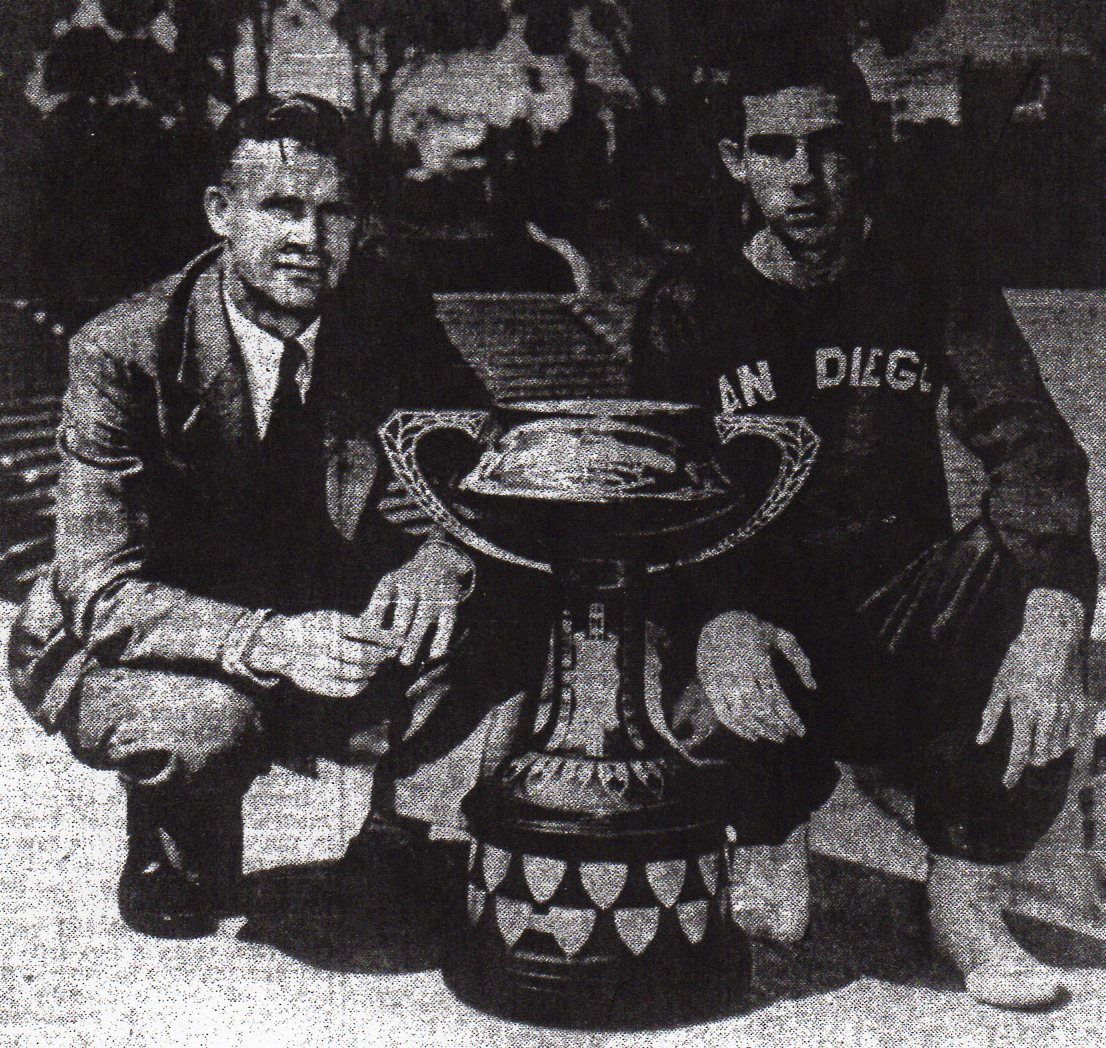
RISING METRO
Oceanside clinched the Metropolitan League dual meet title with a 57 ½-46 ½ win over Point Loma, but it was the Pointers and La Jolla who had the marquee performers.
George Abel, a husky Point Loma sprinter who competed in the 100, 220, and shot put, set school records with a :09.8 century and :21.5 furlong.
Abel was fourth in the Southern Section 100 at the Los Angeles Coliseum.
Jerry Soule won three events in the Chaffey Invitational: high and low hurdles and high jump. Coronado’s Ralph Mitchell was a 23-foot long jumper.
Abel won the 100 and 220, finished second in the shot put, and anchored a Point Loma relay victory and 54 ½-49 ½ win over La Jolla in a dual that was washed out early in the competition and resumed the following Wednesday, five days later.
Soule countered Abel with wins in his usual three events, 70-yard high hurdles (:08.9), high jump (6-4) and broad jump (21-4).
Although they were unbeaten in league dual meets, concluding with the win over Point Loma, Oceanside was not among the 16 schools and 280 athletes who convened at San Diego State for the Divisional. The Pirates bailed and sent a contingent to the West Coast Relays in Fresno.
SPIKE DUST
The :24.2 in the 220-yard low hurdles by La Jolla’s Jerry Soule at the Southern Section finals was the nation’s leading mark in that event and earned Soule a place on the interscholastic honor roll as cited by the National Federation of High Schools…San Diego’s Bob Logan was third nationally in the high jump with his 6-5 1/2, which stood as the school record until Doyle Steele cleared 6-6 in 1966…Logan’s 23-6 3/4 broad jump was not bettered until John Parker went 23-9 1/2 in 1951…it wasn’t until the 1950s that times and performances other than those for first place finishers became common knowledge…many good marks over the years either were unknown or unreported because of concentration only on first place; lack of stopwatches, or timers…Hoover did not enter the Southern Counties meet at Huntington Beach, instead opening Coast League competition with three school records in an 83-39 win over Alhambra…top mark was Alvin Cordray’s 22-6 ¾ broad jump…Cordray set a school record with a 6-3 1/2 high jump in a 71-51 win over Long Beach Poly…San Diego surpassed the century mark for the first time in its dual meet history with a 101-21 win over Alhambra…Hoover’s Clyde Yakel won dual-meet sprints over Long Beach Wilson’s Bill Van Leuvan, whose :09.7 100 against Long Beach Poly was the fastest ever run by an athlete from the beach city…Yakel tied Van Leuvan in the Coast League 100, but Van Leuvan was the Southern Section champion at :09.8…San Diego was host for the Coast League championship meet for the first time since 1924…San Diego’s Bob Logan bombed in the broad jump in the Coast meet but was “byed” into the divisional…Hoover attempted to enter baseball ace Felix Aguirrre in the Coast broad jump but was denied…Aguirre could have entered had his ball season been completed … part of the San Diego contingent motored to Glendale on Friday for the 10 a.m. opening of the Divisional…rest of the squad and a Hoover group drove up early Saturday….
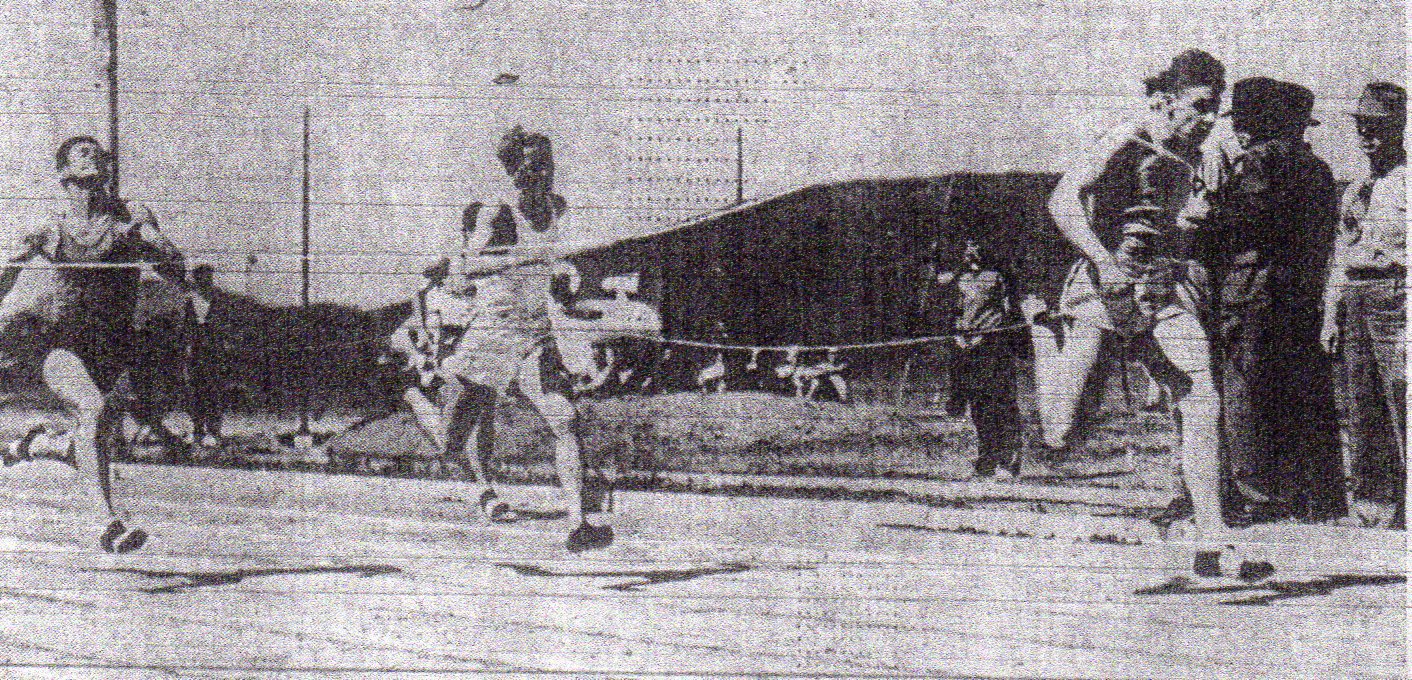

I’m winded after reading your eleven paragraph 10K. I really enjoyed. Liked the State Meet in Hollister, wonder how that little town ever qualified.
I had the honor of staying there one night about 25 years after that meet.
That meet must’ve been the most famous thing ever to happen there until the infamous motorcycle gang raid about ten years after the meet, which the film “The Wild One”was based on.